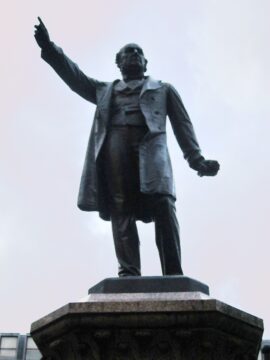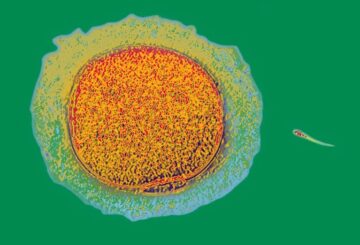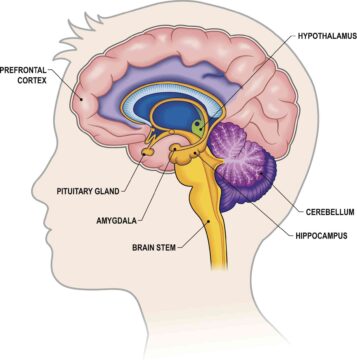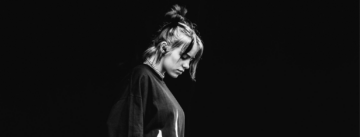Sigal Samuel at Vox:
 For months, OpenAI has been losing employees who care deeply about making sure AI is safe. Now, the company is positively hemorrhaging them.
For months, OpenAI has been losing employees who care deeply about making sure AI is safe. Now, the company is positively hemorrhaging them.
Ilya Sutskever and Jan Leike announced their departures from OpenAI, the maker of ChatGPT, on Tuesday. They were the leaders of the company’s superalignment team — the team tasked with ensuring that AI stays aligned with the goals of its makers, rather than acting unpredictably and harming humanity.
They’re not the only ones who’ve left. Since last November — when OpenAI’s board tried to fire CEO Sam Altman only to see him quickly claw his way back to power — at least five more of the company’s most safety-conscious employees have either quit or been pushed out.
What’s going on here?
More here.

 Today, Amit Shah isn’t home minister for Gujarat, but all of India. From the heart of power in Delhi, he is in charge of domestic policy, commands the capital city’s police force, and oversees the Indian state’s intelligence apparatus. He is, simply put, the second-most powerful man in the country. With the BJP poised to win the current general election, he is all but certain to remain so for at least the next five years. For Modi, he is what Dick Cheney and Karl Rove were for George W Bush – the muscle as well as the brain – rolled into one. Over the past decade, he has been the key architect in remaking India according to the BJP’s Hindu nationalist ideology.
Today, Amit Shah isn’t home minister for Gujarat, but all of India. From the heart of power in Delhi, he is in charge of domestic policy, commands the capital city’s police force, and oversees the Indian state’s intelligence apparatus. He is, simply put, the second-most powerful man in the country. With the BJP poised to win the current general election, he is all but certain to remain so for at least the next five years. For Modi, he is what Dick Cheney and Karl Rove were for George W Bush – the muscle as well as the brain – rolled into one. Over the past decade, he has been the key architect in remaking India according to the BJP’s Hindu nationalist ideology. S
S William Ewart Gladstone was Britain’s prime minister four times between 1868 and 1894, a member of Parliament for more than sixty years, a brilliant and passionate orator, an accomplished writer, and an indefatigable social reformer. Lord Kilbracken, his private secretary, estimated that if a figure of 100 could represent the energy of an ordinary man and 200 that of an exceptional one, Gladstone’s energy would be represented by a figure of at least 1,000.
William Ewart Gladstone was Britain’s prime minister four times between 1868 and 1894, a member of Parliament for more than sixty years, a brilliant and passionate orator, an accomplished writer, and an indefatigable social reformer. Lord Kilbracken, his private secretary, estimated that if a figure of 100 could represent the energy of an ordinary man and 200 that of an exceptional one, Gladstone’s energy would be represented by a figure of at least 1,000. The day when
The day when 
 ‘C
‘C I am a neurobiologist focused on understanding the chemicals and brain regions that
I am a neurobiologist focused on understanding the chemicals and brain regions that  Donald Trump is incapable of meaningful participation in such an event. Only in the sense that “match” can apply to both chess and mud wrestling could the word “debate” apply both to the Kennedy-Nixon event and to Trump’s on-stage behavior. Trump cannot help but distort a debate into a cage-fight. He will, again, shamelessly lie and endlessly interrupt.
Donald Trump is incapable of meaningful participation in such an event. Only in the sense that “match” can apply to both chess and mud wrestling could the word “debate” apply both to the Kennedy-Nixon event and to Trump’s on-stage behavior. Trump cannot help but distort a debate into a cage-fight. He will, again, shamelessly lie and endlessly interrupt. Earlier this year, the singer and songwriter Billie Eilish, who is twenty-two, became the youngest two-time Oscar winner in history, collecting the Best Original Song award for “What Was I Made For?,” a delicate existential ballad that she co-wrote for the film “
Earlier this year, the singer and songwriter Billie Eilish, who is twenty-two, became the youngest two-time Oscar winner in history, collecting the Best Original Song award for “What Was I Made For?,” a delicate existential ballad that she co-wrote for the film “ On the edge of the Alameda, practically bumping up against the old Church of Saint Francis, the gay club flashes a fuchsia neon sign that sparks the sinful festivities. An invitation to go down the steps and enter the colorful furnace of music-fever sweating on the dance floor. The fairy parade descends the uneven staircase like goddesses of a Mapuche Olympus. High and mighty, their stride gliding right over the threadbare carpet. Magnificent and exacting as they adjust the safety pins in their freshly ironed pants. Practically queens, if not for the loose red stitches of a quickie fix. Practically stars, except for the fake jeans logo tattooed on one of the asscheeks.
On the edge of the Alameda, practically bumping up against the old Church of Saint Francis, the gay club flashes a fuchsia neon sign that sparks the sinful festivities. An invitation to go down the steps and enter the colorful furnace of music-fever sweating on the dance floor. The fairy parade descends the uneven staircase like goddesses of a Mapuche Olympus. High and mighty, their stride gliding right over the threadbare carpet. Magnificent and exacting as they adjust the safety pins in their freshly ironed pants. Practically queens, if not for the loose red stitches of a quickie fix. Practically stars, except for the fake jeans logo tattooed on one of the asscheeks. Francis Ford Coppola’s Megalopolis took 41 years to make. It might take as long to understand. Coppola’s magnum opus, which premiered in competition at the Cannes Film Festival last night, is a movie of extraordinary highs and baffling lows, alternately dazzling and confounding. Sometimes, in the same moment, it’s both. When I asked colleagues who’d seen it—at a remote early-morning screening, added at the last minute to accommodate Coppola’s preference for IMAX—they looked at me like the mute humans in the
Francis Ford Coppola’s Megalopolis took 41 years to make. It might take as long to understand. Coppola’s magnum opus, which premiered in competition at the Cannes Film Festival last night, is a movie of extraordinary highs and baffling lows, alternately dazzling and confounding. Sometimes, in the same moment, it’s both. When I asked colleagues who’d seen it—at a remote early-morning screening, added at the last minute to accommodate Coppola’s preference for IMAX—they looked at me like the mute humans in the  H
H The
The